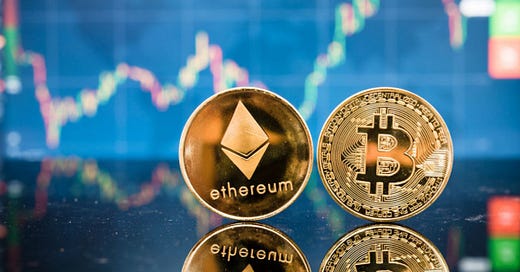I’m Worried About September...
Two words: Ethereum Merge
Let’s talk about ethereum.
Ethereum’s upcoming merge to proof of stake is set to begin on Sept. 6 and conclude sometime between Sept. 10-20. It’s here, it’s finally here, I think… I can’t stop consuming content about the merge. It’s hands down one of if not the most anticipated event in the cryptocur…
Keep reading with a 7-day free trial
Subscribe to Bitcoin Binge to keep reading this post and get 7 days of free access to the full post archives.




